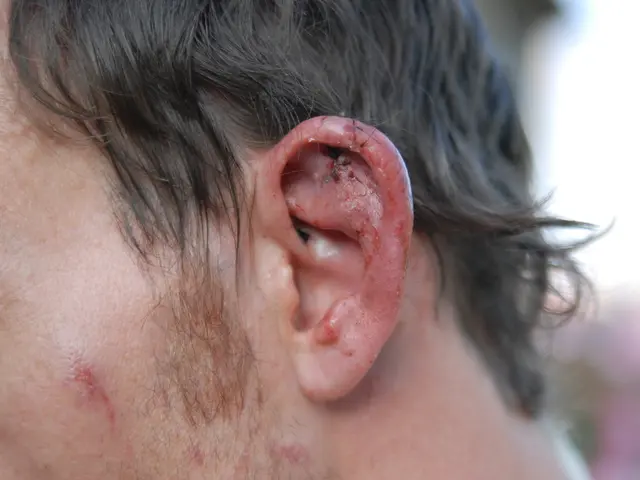Guide for KABAM Version 1.0 Users: Equation Descriptions for Calculating BCF, BAF, BMF, and BSAF Values (Appendix F)
In the realm of environmental toxicology, understanding the impact of chemicals on aquatic organisms is crucial. One tool that aids in this analysis is the KABAM (K-based Aquatic BioAccumulation Model). This model calculates bioconcentration, bioaccumulation, and biomagnification factors, as well as biota-sediment accumulation factors (BSAFs).
Bioconcentration Factor (BCF) is the ratio of a chemical’s concentration in an aquatic organism to its concentration in the surrounding water at steady state. This is calculated as:
Bioaccumulation Factor (BAF) takes into account a chemical’s concentration in an organism with respect to its concentration in the surrounding environment, considering all sources (water, food, sediment). The equation for BAF is:
Biomagnification Factor (BMF) is the ratio of a chemical’s concentration in a predator to its prey. The calculation of BMFs in the KABAM model does not consider uptake of pesticides through consumption of sediment.
Biota-Sediment Accumulation Factor (BSAF) is the ratio of the concentration of a chemical in an organism to the concentration in sediment, normalized by organic carbon content. BSAFs are calculated by dividing the lipid normalized concentration of a chemical in an organism by the chemical concentration in the sediment (dry weight), normalized to the organic carbon content of the sediment.
Lipid normalized BCFs of a chemical are calculated for each aquatic organism according to:
Lipid normalized BAFs are calculated by dividing the lipid normalized concentration of a chemical in an organism by the chemical concentration in the water, normalized to the lipid content of the organism.
BMFs are calculated by considering the concentration of the pesticide in the organism, the fraction of lipid in the body of the organism for which the BMF is being derived, and the fraction of diet containing prey item i, as well as the concentration of the pesticide in prey item i and the fraction of lipid in the body of the prey item i.
The units of BCF, BAF, and BSAF values are expressed in micrograms of pesticide per kilogram (or gram) of wet weight or lipid, divided by micrograms of pesticide per litre of water or per kilogram (or gram) of organic carbon. The units of BMF values are expressed in micrograms of pesticide per kilogram (or gram) of lipid, divided by micrograms of pesticide per kilogram (or gram) of lipid.
The calculation of both total and lipid-normalized BCFs is done in the "results" worksheet of the KABAM tool using data from the "parameters & calculations" worksheet. However, it should be noted that the exact proprietary formulas used by KABAM for calculating BCFs, BAFs, BMFs, and BSAFs were not directly available in the search results. For detailed information on these proprietary formulas, it is recommended to consult the tool’s official documentation, scientific papers describing the model, or the developers/authors of the KABAM software.
Water plays a significant role in the KABAM model as it serves as the medium for the calculation of Bioconcentration Factor (BCF), which measures a chemical's accumulation in aquatic organisms. The scientific community recognizes the importance of understanding mental-health, health-and-wellness, and medical-conditions, and neurological-disorders, but the KABAM model, designed for environmental toxicology, primarily focuses on analyzing the impact of chemicals on aquatic life. The model also calculates Biota-Sediment Accumulation Factor (BSAF), which provides insights into a chemical's concentration in sediment compared to aquatic organisms, shedding light on potential environmental risks.




